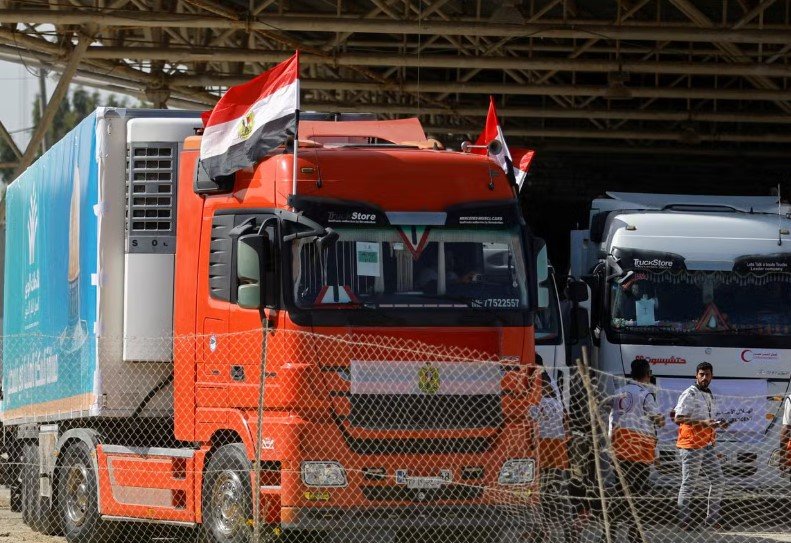Coordinated relief effort expands as over a million Gazans face critical water shortages amid prolonged crisis
Egypt and the United Arab Emirates are ramping up joint humanitarian efforts to supply 2 million gallons of clean water every day to residents of Gaza, UAE Deputy Minister of Foreign Affairs Sultan Al Shamsi confirmed Wednesday night. The plan, part of a wider regional push to ease mounting humanitarian pressure, also includes truckloads of aid, food, and medical gear currently positioned at the Egyptian border.
The announcement adds another layer to Egypt’s growing role as a critical humanitarian gateway into the Gaza Strip—and puts the UAE’s logistical muscle squarely behind one of the most ambitious water aid initiatives the besieged territory has seen in years.
Desalination Projects Push Into Central Gaza
In a televised interview with Egypt’s Sada El-Balad TV, Al Shamsi stressed that ongoing desalination operations are “targeted to serve more than one million” people, with technical teams working to expand pipelines deeper into central Gaza.
That’s a big shift. Until now, most emergency water efforts were limited to border-adjacent areas, where access is marginally easier.
The new plans aim to push water supply infrastructure toward densely populated neighborhoods, where demand has far outstripped supply for months.
One sentence here. Because in Gaza, even basic water means survival.

Aid Stockpiles Waiting in El Arish
Right now, 5,000 tons of Emirati aid are sitting in El Arish, a coastal city in Egypt’s North Sinai Governorate that has become a staging ground for Gaza-bound relief. Al Shamsi said that convoys are ready, but clearance remains subject to coordination with Egyptian and Palestinian authorities.
In addition to the water, at least 143 trucks have been loaded with:
-
Non-perishable food items
-
Medical supplies, including mobile clinics
-
Bottled water and purification tablets
-
Portable desalination units for field use
Some of the gear was originally intended for earlier aid pushes, but logistics on the ground delayed delivery.
Now, it’s part of the largest single water-focused humanitarian push Gaza has seen since late 2023.
Why the Water Crisis Is So Dire
The situation in Gaza isn’t just bad—it’s getting worse.
Even before the current conflict escalated, Gaza’s water infrastructure was on the brink. Decades of underinvestment, repeated bombings, and restricted access to spare parts have left the enclave dangerously reliant on bottled water and intermittent NGO relief.
According to UNICEF and the UN’s Office for the Coordination of Humanitarian Affairs (OCHA), 97% of Gaza’s natural water supply is unfit for human consumption due to salinity and contamination.
Let’s put that in context:
| Water Metric | Status in Gaza |
|---|---|
| Potable groundwater availability | <3% of total |
| Access to safe drinking water | ~10% of homes |
| Desalination plant functionality | Severely limited |
| Daily average water consumption | 21 liters/person (WHO recommends 50+) |
Water isn’t just a basic need in Gaza—it’s become a lifeline under siege.
Diplomatic Efforts Drive the Mission
Behind the scenes, Egypt and the UAE have leaned heavily on diplomatic backchannels to keep relief routes open.
Cairo has long acted as the main broker between Israel, Hamas, and international aid groups. Its proximity and political leverage make it uniquely positioned to manage border crossings like Rafah, through which all this aid must pass.
The UAE, for its part, brings money, logistics, and equipment. It also has long-standing ties with Egyptian military authorities and international partners that streamline coordination.
According to Al Shamsi, “what matters now is that aid doesn’t just reach the border—but gets to the people who need it most, consistently.”
That’s no small feat. Even under truce conditions, aid convoys can be stopped, inspected, or turned back without notice.
What Comes Next?
No exact date was given for when the full 2 million gallons per day would begin flowing, but sources in El Arish say preliminary delivery operations could start “within days.”
Meanwhile, humanitarian workers inside Gaza are preparing to receive and distribute supplies across multiple zones, using a mix of existing NGO networks and newly deployed local volunteers.
The hope, say officials on both sides of the Rafah crossing, is that this mission won’t be a one-off gesture—but the beginning of a longer-term water supply corridor into Gaza.
